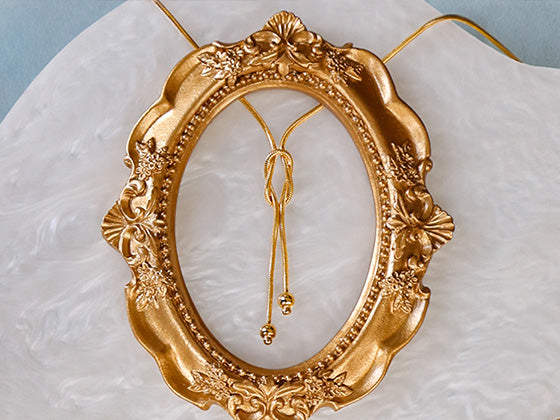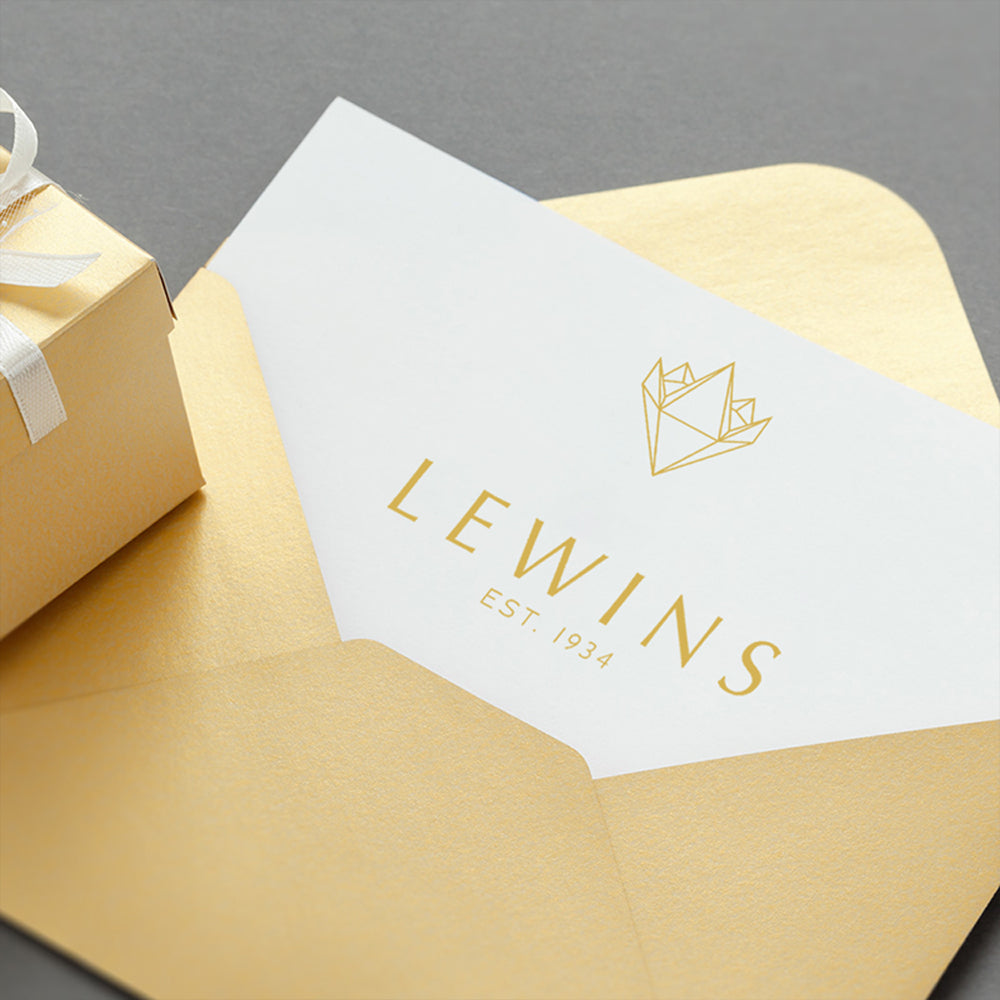This estate ring comprises of an emerald cut aquamarine, that has been set centrally within a four prong setting. The ring has been accented with a row of four melee diamonds, on either side of the aquamarine. It is further flanked by two trillion cut pink tourmalines. The ring is mounted within hallmarked 14ct yellow gold and features a knife-edge profile.
Material: 14ct Yellow Gold
Brand: Lewins Vintage
Style: Dress
Primary Stones: Aquamarine, 1 Emerald Cut apx. total carat weight 1.86cts
Secondary Stones: Pink Tourmaline, 2x Trillion Cuts apx. total carat weight 0.30cts
Accent Stones: Diamonds, 8x Single Cuts apx. total carat weight 0.08cts
Birthstone: Aquamarine - March, Tourmaline - October, Diamond - April
Anniversary: Aquamarine - 19th, Tourmaline - 8th, Diamond - 10th, 60th
Ring Size: N
Resizeable: Yes
Weight: 2.74 grams
Condition: Very Good
Period: Estate, Contemporary
Hallmark: The standard mark, “585”. The assay office mark of Birmingham. The date letter mark is unknown. The maker’s or sponsor's mark “SG”.
Gem Lore:
Aquamarine - can be broken down into latin words ‘aqua mare’, which simply translates to ‘sea water’. The gemstones notable blue hue, is frequently compared to the sea, from its name to the assortment of references in ancient literature. In greek mythology, the gemstone is known to be created by Poseidon from seawater or washed ashore from the treasure chests of sirens. The romans believed the gemstone to bestow protection and luck, when travelling at sea and quickly became referred to as the ‘Sailor’s gem’. Today, aquamarine is thought to symbolise serenity and tranquility.
Diamond - derives from the Greek word ‘adamas’, which translates to ‘invincible’. Today, the meaning somewhat refers, to the gemstones excellent hardness (ranking 10 on Mohs' scale), hence diamonds are highly resistant to be scratched or abraded by another material, other than diamonds itself. Moreover, diamonds possess the magical phenomenon of fire, which relies on the facetted gemstones ability to disperse (split) light, into a rainbow of colours.
The ancient Egyptians thought diamonds symbolised life, and the Pharaohs were known to place the gemstone in the centre of an ankh cross. Whereas, the ancient Greeks believed diamonds to be the tears of the gods or broken splinters from fallen stars. Alternatively, in ancient Roman literature it is noted that Cupids arrows were ‘diamond tipped’, maybe one of the first references that associates the gemstone with love.
Tourmaline - derives from the sinhalese (Sri Lanka) term ‘tourmali’, which simply translates to ‘mixed coloured stones’. Tourmaline is an umbrella term for six species, the most common member fashioned into jewellery, is called ‘Elbaite’. This species comes in a array of colours from: colourless, white, yellow, orange, red, pink, purple, blue, green, brown and black, which reflects the meaning of gemstone. Elbaite is named after the small Mediterranean island Elba, off the west coast of Italy, where tourmaline was first discovered. The ancient Egyptian pharaohs, unfolded the legend, in which tourmaline gained a kaleidoscope of colours, by breaking a rainbow whilst rising from the earth. Today, tourmaline it thought to symbolise creativity and insight.
Ring Resizing Service - How To Request Your Size:
If the current ring size listed under the details section, does not match your requirements. Please complete the enquiry form: including the reference code of the ring, which is located above the price, along with the ring size you need.
We will assess the feasibility of your request and provide you with a quotation for the bespoke alteration. If you decide to proceed, we will email you a link to review and process your customised order.
*Please Note: our resizing service typically requires a timeframe of 10 to 14 working days to complete. Rings that have been resized, cannot be returned for an exchange or refund.
Can Any Ring Be Resized?
No, depending on the design and setting, some rings cannot be resized. Whilst other rings can be safely resized up or down, by one to four sizes.
Are There Limitations To Resizing Rings?
Yes, it is important to appreciate that rings are made to fit their current size. When a request is made to significantly reduce the current size, it can result in the band developing an oval shape. Equally, increasing the size beyond a certain point, can alter the curvature of the band. Such modifications can potentially compromise the stability of settings, that hold gemstones securely in place.
As a result, there are limitations on how much a ring can be resized without compromising its structural integrity. If a requested size change impedes the durability of the ring, alternative solutions such as incorporating a half shank or soldered beads, if appropriate can be suggested.
Remember there is only about a 1mm difference between each whole ring size. For more information on what to consider when finding your size, read our blog: "The Factors Affecting Ring Size”.
Jewellery Care Precautions:
Avoid direct contact with: perfume, lotions, skincare, hairspray / other chemicals. Remove, your jewellery: when showering, swimming (as both chlorine and saltwater will react with metals), washing your hands / using hand sanitisers, before going to bed or when participating in physical activities (going to the gym, exercising, gardening, housework etc….).
Beware, metals may tarnish over time due to oxygen contact and natural body oils. Prevent items from being exposed to moisture and direct sunlight, for long periods. Store jewellery in a dry place away from humidity, in a pouch/jewellery box and keep each piece separated from each other. Care, for your jewellery by cleaning with a soft dry cloth.
Yellow Gold:
Gold as an element, in its purest form will not tarnish, but gold used in jewellery has been alloyed with other metals, to increase durability. These metals have properties that when in contact with oxygen, chemicals, oils or other substances - will result in a surface tarnish or damage and corrosion. Even the pH level of you skin and the natural oils it produces, can tarnish your gold jewellery.
To prevent your gold jewellery from tarnishing or even disintegrating, avoid exposure to household chemicals, bleaches, toothpaste, baking soda and other cleaning abrasives. Wearing jewellery in places where perfumes, hairsprays, body lotions have been applied on your body, will increase tarnishing. Wear your jewellery after the products have been applied. To clean your gold jewellery, use a mild soap with warm water and dry with a soft cloth. For professional cleaning, our workshop can polish your jewellery back to life.
Aquamarine, Beryl:
Hardness: 7.5 | Toughness: Good | Stability: Good
Mild Caution, Avoid: Sudden Impact (knocks), Heat, Jewellery Cleaners (ultrasonic, steam cleaners).
Gemmological Observation: Clean with mild soapy water and dry with a soft cloth.
Diamond:
Hardness: 10 | Toughness: Good | Stability: Excellent
Low Caution: A very durable gemstone, generally it is safe to use in; Jewellery Cleaners (Dips, Ultrasonic, Steam Cleaners).
Gemmological Observation: Diamonds have excellent hardness, this means only a diamond can scratch/abrade another diamond. To avoid scratches, store your diamond set jewellery separately. Diamonds only have good toughness, as they possess perfect cleavage. This means that if knocked in the wrong direction, the diamond can cleave/fracture. Whilst wearing, you will need to avoid: Sudden Impact (sharp knocks). If the diamond is heavily fractured, you will need to avoid using: Jewellery Cleaners (ultrasonic, steam cleaners).
Tourmaline:
Hardness: 7-7.5 | Toughness: Good | Stability: Very Good
Extreme Caution, Avoid: Heat, Jewellery Cleaners (ultrasonic, steam cleaners).
Mild Caution, Avoid: Sudden Impact (pressure, knocks).
Gemmological Observation: Heat may cause colour to alter and fractures could worsen. Tourmaline is pyroelectric, this means that when the gemstone experiences a change in temperature (for instance heat from the sun/lighting) it causes a low-level electrical attraction to fine dust particles. Therefore, you may experience that any tourmaline-set jewellery may need frequently cleaning.

















 Contact Us
Contact Us







